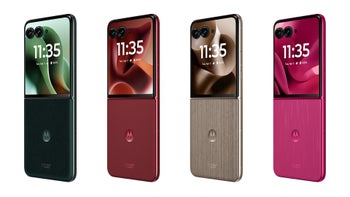There is nothing wrong with Nothing's Phone 1 screen brightness numbers
This article may contain personal views and opinion from the author.
We may earn a commission if you make a purchase from the links on this page.

Nothing has explained the reasoning behind its debut Phone 1 peak screen brightness advertising in the official specifications sheet. There, the Nothing Phone 1's display was listed as being able to achieve 1200 nits of brightness which typically indicates that Nothing may have secured one the latest OLED display generations.
Subsequent tests, including our own Nothing Phone 1 review display benchmarks, showed that the Nothing Phone 1 hits "just" 700 nits of brightness, quite a bit lower than the promised 1200 nits. Here we'd have to note that this is not unusual. Samsung, for example, also advertises a peak brightness levels of 1750 nits for the Galaxy S22 Ultra, because this is a record value for a phone, yet is nothing you can get from the phone while you lounge on the beach.
It's because that number is the absolute maximum that the panel is physically able to achieve when just a tiny fraction of it (about a percentage point) has its light-emitting diodes powered to the maximum while showing all white, and that's is exactly the number that Nothing advertised, too.
This is the worst scenario in terms of power draw and consumption by that small portion of the panel can go sky high while hitting its advertised record brightness, that is why the other number that Samsung lists is 1200 nits in "High brightness mode." That is most likely the state with a fully powered panel showing all white across its surface and the brightness goes downhill from there when a typical content mixture is shown.
'Peak brightness' is a scam
We kid, it's a fairly useful metric for outdoor visibility, coupled with the screen reflectance and contrast numbers. Even Samsung's "High brightness" number of 1200 nits, however, is only achievable in autobrightness mode under special circumstances like showing HDR content with direct sunlight falling on the display's brightness sensor on a day at the beach.
In order to recreate such a scenario during our screen benchmark testing, for instance, we leave the phones in their default state with the autobrightness toggle turned on, and shine a very bright light imitating a sunny summer day over the brightness sensor to see how high it can truthfully go and even then the S22 Ultra barely managed a number more akin to a typical brightness scenario.
Apple, for example, also advertises 1000 nits of "typical" max brightness, or a 1200 nits peak when showing HDR content. Indeed, we measured 1051 nits in the "typical" scenario, and also for the Galaxy Z Fold 4 which Samsung says can now hit 1000 nits, we measured 939 nits, way higher than its predecessor and a promise kept.
Thus, the only fault of Nothing while advertising the peak brightness levels of its Phone 1 is that it didn't specify the circumstances when it can hit those levels, yet other phone makers don't do it either and prefer to boast the highest number.
In fact, Nothing went on record clarifying that it meant that the panel is physically able to hit 1200 nits, but battery draw and heat considerations it limited its maximum brightness to 700 nits, and "in auto brightness mode under strong light environment" at that, what Samsung calls "High brightness" mode.
"The hardware is capable of reaching up to 1,200 nits peak brightness, but this is currently capped by the software to 700 nits," clarified a Nothing spokesperson for Android Central. "This decision was made to ensure a balanced user experience regarding heat and battery consumption," they added.
This furthers the notion that the only omission Nothing may be guilty of, is clarifying the conditions under which the Phone 1 panel can hit 1200 nits for all of our geeky souls out there who actually read the specs list.
After all, Samsung's Galaxy S22 Ultra press release reads that its "immersive 6.8-inch,12 Dynamic AMOLED 2X display brings everything to life in stunning detail and brighter than ever with a peak brightness of 1,750 nits."
Good luck hitting that anytime soon on the S22 Ultra, even in "High brightness" mode conditions, so we'd give Nothing the benefit of the doubt as they changed the official Phone 1 specs list to more accurately reflect the typical brightness of its display immediately after the fairly manufactured controversy got publicity and explained why they went overboard in the beginning.
After all, it's a sub-$500 phone with display luminosity in the category's ballpark, while peak brightness is just one of the components for good outdoor visibility, with low display reflectance ratio arguably even the more important number in that respect. What do you think?























Things that are NOT allowed: